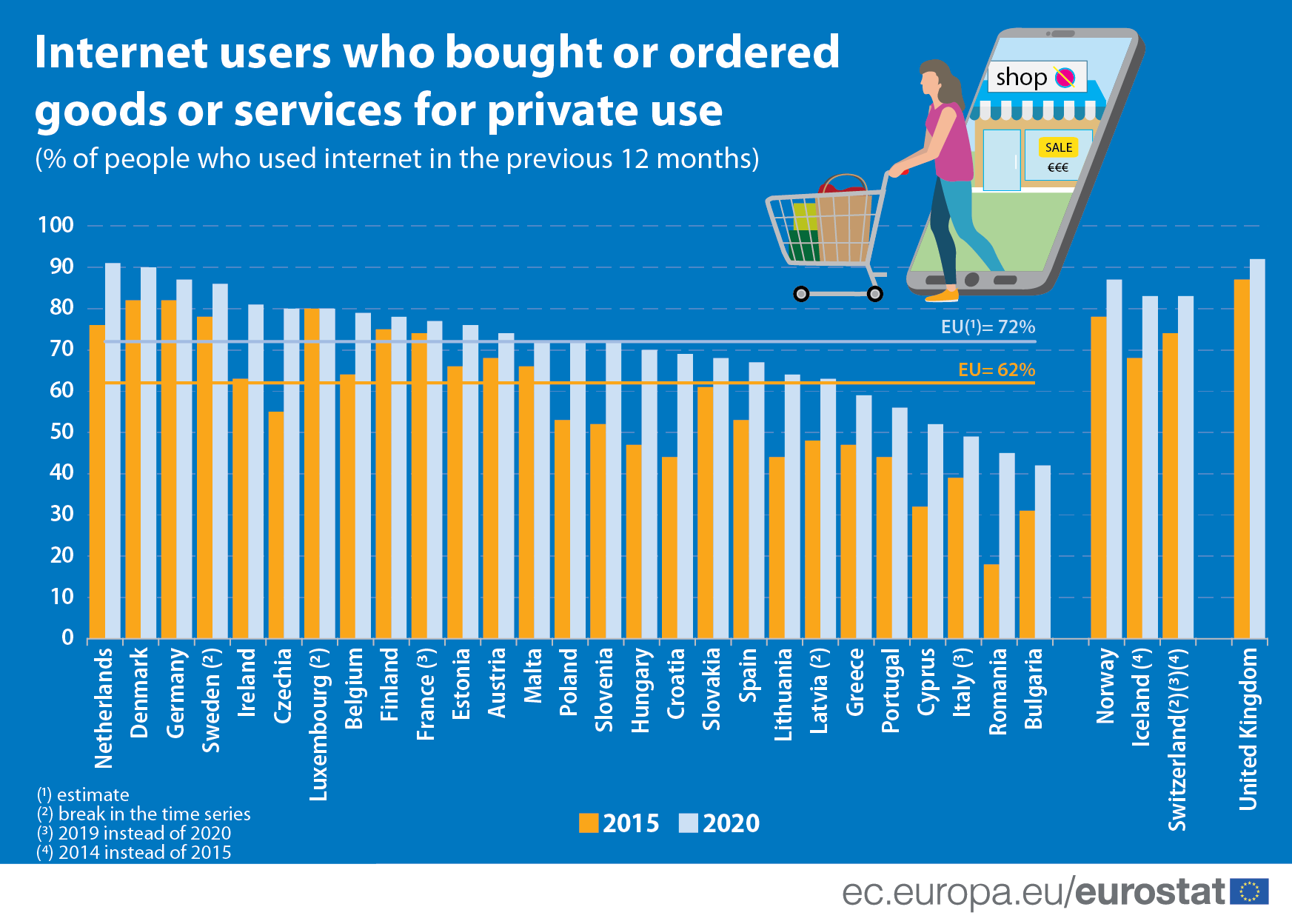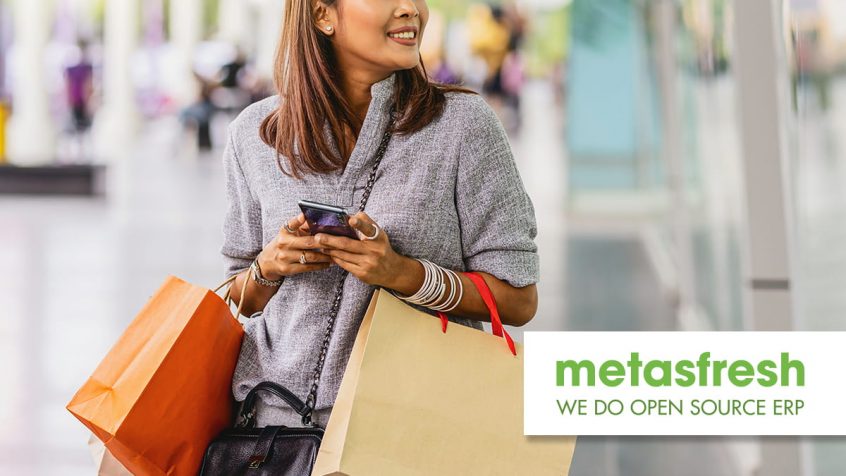Share this Post
In 2018, the world’s biggest online retailer launched its first Amazon Go store concept, bringing its expertise in enabling frictionless online experiences to the brick-and-mortar environment. Since then, this contactless, cashierless, app-based, “Just Walk Out” in-store experience — just one of the seven different kinds of physical store formats operated by Amazon — has expanded to multiple locations, and is even seen as a threat to big food retailers such as Walmart and Kroger.
Meanwhile, on the other end of the spectrum is the race to bring offline in-store inventory into the age of digital retail. Google’s Local Inventory program, for instance, connects online and offline activity by enabling brick-and-mortar retailers to extend their inventory online and allowing smartphone users to search locally for specific stores and products. Last year, Google also announced the acquisition of Pointy, a Dublin-based startup that helps brick-and-mortar retailers make their inventory discoverable online. Another key player in this local availability trend is Google-backed NearSt — a British retail tech startup that registered a three-fold increase in local product searches in 2020.
Clicks-and-Mortar: More Synergy than Zero-sum

Online shopping ever more popular in 2020. —Source: europa.eu
The ongoing pandemic, and the consequent restrictions on in-store retail, has understandably favoured online shopping, even helping expand the scope of ecommerce through new players, new consumer segments (e.g., elderly) and new categories (e.g., groceries). At the same time, shopper interest in local stores and inventory has also increased, with Google reporting that “local” + “business(es)” and “who has” + “in stock” searches have increased by 80% and 8,000% per cent respectively over the past year.
Over the long term, the correlation between ecommerce and brick-and-mortar is more about amplifying the synergies than it is about scrabbling for zero-sum growth. Therefore, even as online-only players like Amazon experiment with physical stores, omnichannel retail brands are preparing for the post-pandemic landscape by investing in new store locations.
Similarly, it is imperative for brick-and-mortar-only retailers to evolve into clicks-and-mortar in order to cater to the ecommerce-savvy consumer. More importantly, this will allow them to capitalise on increasing consumer interest in local shopping and build a unified bricks-and-clicks shopping experience that is aligned with one of the key shopping trends of the day.
Finding Growth in the Gap
A click-and-mortar strategy is primarily about finding the perfect equilibrium between online and physical retail models. It is not about prioritising one over the other, but ensuring that the hybrid approach yields more opportunities for enhancing customer experience, growth, and profitability than would otherwise be possible from each of its constituent parts. For traditional brick-and-mortar-only retailers, expanding online is as much about keeping up with the times as it is about pursuing new avenues for growth. With that in mind, here are some of the key benefits of bridging offline and online under a unified omnichannel strategy.
Expansion, at an Incremental Cost
There are a number of ways in which conventional offline retailers can expand their online presence — and none of them is as capital-intensive as a physical expansion. Let’s start with some of the Google-based models already mentioned earlier.
For instance, a simple listing with Google’s Local Inventory Ads program can quickly integrate in-store inventory with online shopping journeys and improve store visits and sales by as much as 17% and 33% respectively. Pointy integrates either through hardware or a free app to POS system to automatically create a search-optimized Pointy page. Similarly, NearSt software automatically connects to existing POS/inventory management systems to optimise in-store inventory for local search.
And it’s not just Google. Today, almost every popular social media application features built-in easy-to-use social commerce features. Plus, based on budget, there are a variety of online options such as specialised platforms, third-party marketplaces, or even a custom website/app.
Today it is possible for every physical retailer to quickly and cost-effectively build a network of online touchpoints optimised for click-and-mortar commerce.
Enabling the Best of Each Experience
The bricks-and-clicks model enables retailers to create a seamless and unified shopping experience by accentuating the best features of each model — such as the convenience of online and the instant gratification of in-store retail.
Take BOPIS (buy online, pickup in-store) — a trend that has grown over 250% during the pandemic. In the click-and-mortar model, the consumer has the convenience of browsing online and accelerating order fulfilment by picking up in-store. This model enables physical retailers to reach their target customers where they shop — on their smartphones and laptops — integrate elements of in-store shopping that streamline fulfilment, and augment the experience with additional cross-promotional opportunities that enhance transaction value for both the shopper and the retailer.
Data-Driven Customer Engagement
Integrating physical and online retail touchpoints into an integrated click-and-mortar model generates more actionable data that allows retailers to take a holistic view of business performance and customer experience. Retailers can leverage the power of these data-driven insights to manage business performance, enhance customer service, personalise the customer experience, and create targeted campaigns.
And It All Starts with the Right ERP
One of the essential requirements for successful click-and-mortar retail is a single source of truth for all business data across product inventory, retail touchpoints and value chain nodes such as sales, shipment, invoicing, payments, procurement, etc. Though that might seem like a huge technological challenge, all it takes is the right back-end ERP solution.
And here are some good reasons why an open-source, license-free, and fully customisable system like metasfresh ERP can streamline and accelerate the transition from a physical store to an omnichannel retail model.
The metasfresh ERP system is a 100% open source and a completely license-free solution backed by our commitment to higher-than-industry-average enterprise support, weekly release cycle to bring the latest features and improvements to our customers, and ability to adapt the software for individual requirements. With open source, our customers have long-term control over the source code. This means that the solution is vendor and technology independent and can be customised to the exact requirements of the retailer.
A central management and control system enables metasfresh customers to integrate all sales channels, and map and automate all business processes for optimal performance.
As the command centre for planning, control and execution of all business processes, metasfresh allows businesses to integrate cutting-edge technologies as and when required to sustain their digital transformation programs.
The metasfresh solution comes with built-in capabilities to analyse huge volumes of complex data in real-time to augment data-driven decision making.
With its browser-based web interface (WebUI) and cloud architecture, customers can access the metasfresh ERP system from anywhere in the world and on any device.
Go Omnichannel with metasfresh
The growing importance of local inventory availability in online shopping preferences gives local brick-and-mortar retailers a definitive commercial incentive to expand into a digital omnichannel presence. However, the implications of making such a move might at first glance seem technologically daunting. But all it takes is for retailers to find the right ERP solution that can comprehensively address all current digital business requirements, and one that is scalable so it can accommodate future growth and digital transformation initiatives.
Talk to us here at metasfresh to learn more about how metasfresh Cloud ERP can power your clicks-and-mortar strategy.
metasfresh is a member of the Ecommerce and Cross-Channel Club Cologne (ECC Club Köln), which is managed by the Institute for Retail Research Cologne (Institut für Handelsforschung, IFH Köln). The Institute offers individual research projects with strategic consulting. It specialises in the areas of inter-company comparisons as a controlling instrument, enabling retail companies to recognise market developments, measure changes in customer behaviour, optimise sales and set the course for a successful future. The insights and knowledge provided by the Institute through market research and studies relating to cross-channel and online retail are incorporated in the development of metasfresh, meaning all of our users are always up to date on the latest ecommerce developments.
Since 2006, we’ve been developing our ERP software non-stop with open source components and under the open source licences GPLv2 and GPLv3. Our mission is to enable each and every company to access a powerful ERP system that supports digital transformation and fuels corporate growth. Get in touch today for more information and insights.
Share this Post



